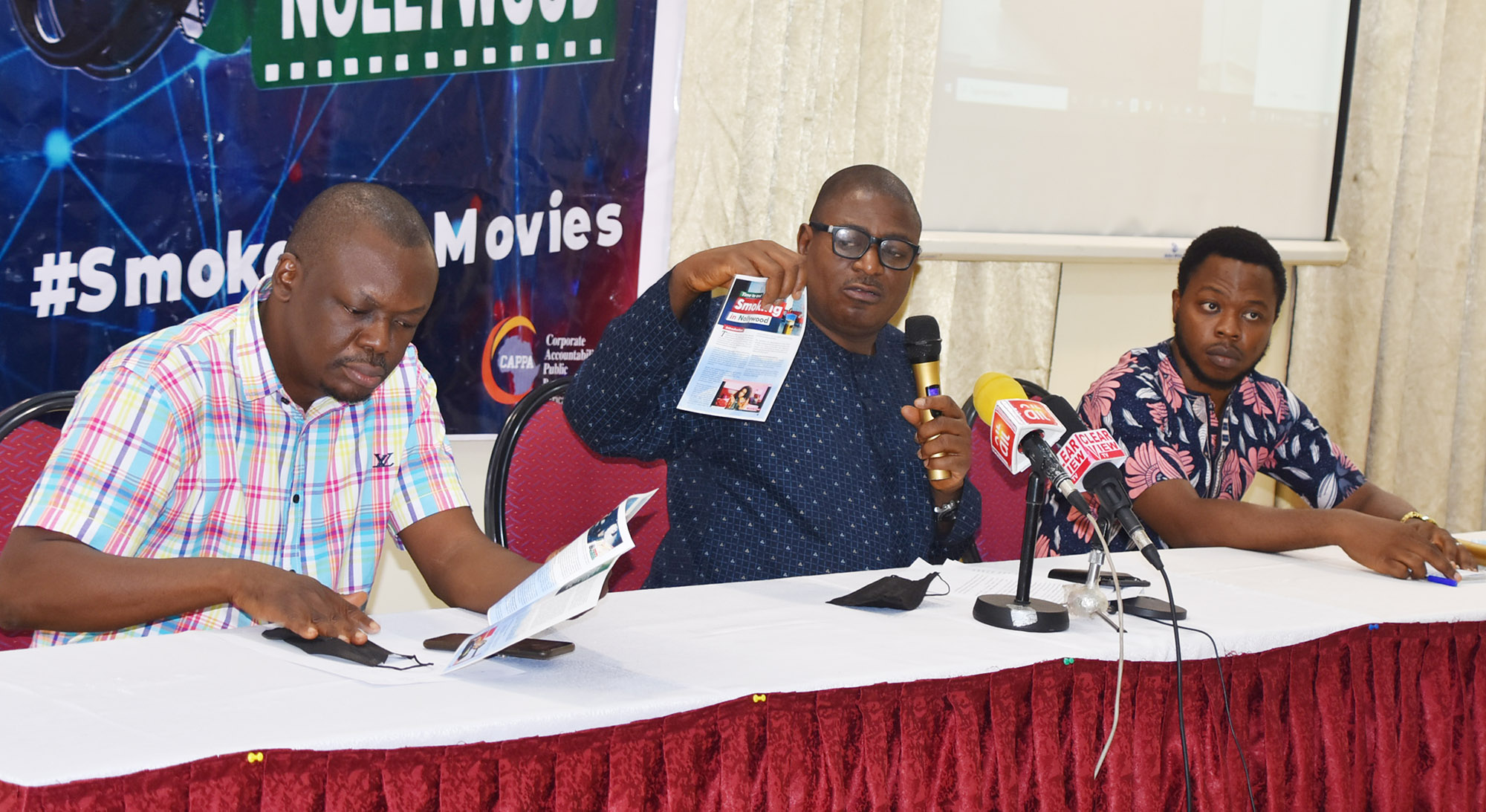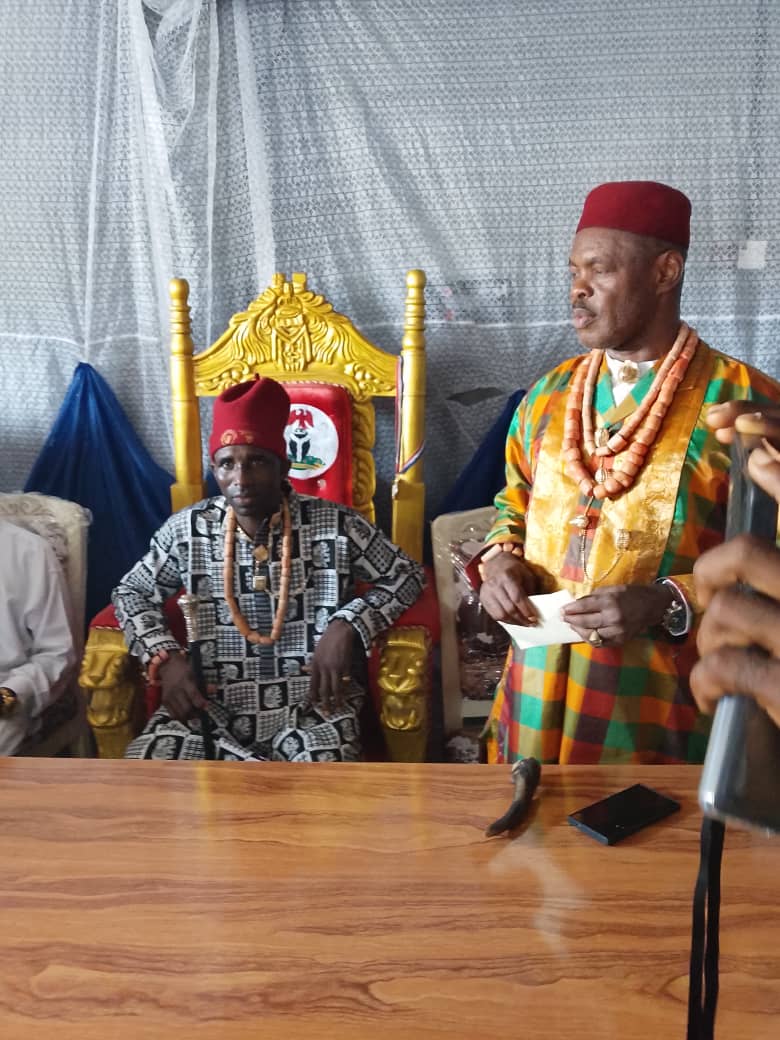Nation
Nigerian Arts, Expression Of Diverse Culture, Tradition And Religion

Arts, according to Merriam Webster Dictionary, means “something that is created with imagination and skill that is beautiful or that expresses important ideas or feelings”. It could also mean methods and skills used for painting, sculpting, drawing etc.
The Oxford Advanced Learner’s Dictionary defines arts as “The use of imagination to express idea or feelings particularly in drawing or sculpture”.
While Njoku Moses of Affinity Art Gallery notes that the story of Art could be simply put as the story of civilisation and evolution of man. Most of the materials and clues employed by ethnographers and anthropologists in constructing the story of the early man are largely based on the artistic objects and instruments left behind by the early man.
In the pre-colonial era almost all over the 250 ethnic groups and languages that make up the entity named Nigeria by the British colonial masters, practised one form of art or the other. Like in most African countries including Nigeria, arts is inseparable from their religion. Arts is seen as the agency through which their religion is given expression.
Prior to the coming of the colonial masters, Nigeria was a melting pot of artistic explorations, Nigerians used their art to interpret their world as they see it as well as concretise saw their cosmological views on life and esoteric ideas. They employed art in the various cultural celebrations and ceremonies because of the pantheist nature of the traditional religion.
The early Nigerian society, produced a large collection of ancestral images and gods, spirit entities, natural elements and, forces such as wind, fire and water and land were given recognition as possessing spiritual authority and required reverence. They therefore made art object to represent the essence and attributes of these supposed forces. This they did with the hope of subduing or at least appeasing them in some cases, harness this power and by so doing be able to bring them under some sort of control or form some kind of pact with them.
A close study of the traditional art in Nigeria shows that most of the artifacts and cultural pieces produced by the different cultural group are largely grouped within the boundaries of these mediums, stones, Terracotta, woods, Bronze, paintings and crafts.
These include: Esie And Ikom Stone Sculpture.
Though Esie is a predominantly Yoruba community, the origin and the identity of the makers of the stone sculptures have remained in obscurity, crystallising into different mythological stories by the community.
It has however been established that the Esie stone sculpture is a composition of about a thousand soup stone sculptures depicting both human and zoomorphic features. The human figures represent people engaged in various human daily activities. The stone sculptures represent a cosmopolitan collection of different cultures with features such as sophisticated hair styles dresses, tribal marks, necklaces and bracelets with multiple cultural traits that connect them with different ethic groups surrounding the area. The Esie stone works are also recognised as the largest collection of stone carving in Africa. The Ikom monoliths of Cross River State represent the second yet known largest collection of a handful stone sculptures the stone works are found in an area inhabited by the Ekoi people along the bank of Cross River. The Ikom figures are generally those of humans and are highly geometricalised measuring between 2 to 6ft. The appearance of beards in all figures clearly shows that most of them are males, scientific researches on this works dates them to around 200 AD
Terracotta Culture
In Nigeria, almost every cultural group possesses one form of terracotta art or the other. the Nok culture is dated to have flourished between the years 2000BC and 300AD making it the oldest form of traditional art not just in Nigeria, but West Africa. The following are the stylistic characters of Nok Art, complicated coiffure high geometricism with cylindrical heads, perforated eyes, nose, mouth and ears, semi circular and triangular eyes and lids etc.
Aside from the Nok culture, Ife Terracotta works are another notable ancient traditional art, emanating from south western Nigeria, dating as far back as 12-15 centuries AD. Ife Art is located at the heart of Yoruba ancestry
Wood Carvings
Scholars have also established that Nigeria possesses the largest collection of sculptural works in sub Saharan Africa; most of the artwork are on wood and are applied to different uses. This was possible due to the diversity in cultural abundance and most importantly as a result of the surplus abundance of timber made possible by the country’s location within the tropical rain forest region of Africa. Therefore almost all cultural groups in Nigeria possess one form of wood carving tradition with notable styles and characteristics to them
Ancestral Figures
Most ethnic groups in Nigeria have a tradition of carving ancestral figures. In Yoruba land, they have the Ibeji figures, these figures are done to celebrate the birth or death of twins in Yoruba tradition. It is backed by the people’s belief that twins are powerful spirits who are capable of bringing wealth to their families or misfortune to those who do not honour them.
In the Igbos of the South Eastern Nigeria, one of the most popular and ancestral figures come in the form of Ikenga wood carving. Ikenga is usually used to denote the power of a man’s right hand and his accomplishments, it is represented usually by a figure holding different things such as horns and swords. This practice of Ikenga carving has penetrated other cultures around the Igbo’s such as Edo who call it Ikengaobo and the Igala who call it Okega.
Doors And Wooden Posts
The Yorubas have a rich tradition of carved wooden posts and carved chip doors. This style of carving was so highly developed that guild of carvers and artists were developed around it. It was through this important system of traditional art society education that gave birth to 20th century artists like the famous Olowo of Ise, who many scholars have acclaimed as the most important Yoruba artists of the 20th century because of his virtuosity and dexterity in the niche of carved wooden doors and house posts.
Similarly, the Igbos also have a developed system of wood carving of doors and house posts. In the past, the houses of highly placed individuals and the affluent were embellished with these works. In fact, it was used to identify the extent of wealth and social importance of individuals. The Awka guild of carvers was found in Anambra State.
Igbo Ukwu, Ife And Benin Bronze Tradition
The Igbo Ukwu bronze tradition is unarguably one of the most celebrated contributions of the Igbo race to African artistic and technological heritage. The origins and the technology and knowledge as displayed by the complicated and intrinsic design employed by Igbo Ukwu bronze finding still baffle scholars till date. The Igbo Ukwu art heritage is reputed to be the oldest bronze sculpture tradition in sub-Saharan Africa, dated to about 9th century AD.
The ancient city of Ife is widely acclaimed by the Yoruba as the birthplace or the ancestral home of the Yoruba people. Many of the Ife ancient Ife artifacts today have been traced to the dynasty of the Ife King, Oba Obalufo 11, who is highly regarded as patron of the arts. One notable characteristics of the Ife art is the emphasises on the size of the head as being the centre of knowledge, symbol of Ego and destiny etc.
The Ife artists therefore do not observe the rules of proportion in producing their figures but rather usually are made a little larger than the rest of the body. Another notable characteristic of Ife art is in the use of small holes to indicate beards and hairline of masks and faces and the presence of prominent scarification lines running vertically across the whole face.
The Ife’s were also adept in their mastery of copper and its alloys and they produced a handful of works using the material. They also produced Terracotta works. They also produce art works that please the Oba. Great efforts were put into their production to achieve striking naturalism which is one of the most notable attributes of the Ife copper heads which have their facial features well articulated to true representation of the individuals depicted.
Of all the bronze casting traditions found in Nigeria, Benin ranks as the most famous for the great attention to details, mastery of craftsmanship and dexterity with which they were executed. The inventiveness of Benin civilisation and art were first brought to western public view through the infamous punitive British invasion of the kingdom in 1897 which saw a great number of Benin artifacts carried away by the British soldiers as booties.
The ancient Benin like their Yoruba counterpart placed great importance on the head as a chief part of the body. They therefore believe that the head is imbued with spiritual energy (Ehi) deposited by the creator, Osanobua and his eldest son, Olokun, this is probably the reason why the Benins have a massive repertoire of bronze heads of their Obas during their royal regalia.
Contemporary Nigerian Art
Following the dawn of independence in Nigeria, artistic foraging has continued to flourish, leading to the flowering of a multiplicity of the contemporary styles in art production. Though the acquisition of formal western education, Nigerian art scene has become individualised, detribalised and universal with little common traditional traits, still noticeable in the corpus of works addressed today as contemporary Nigerian Arts Globalisation influences and current sociocultural and political issues have contributed to a proliferation of styles and techniques.
Nation
Over 26,000 Lagos Students Failed 2024 WASSCE -Commissioner
The Lagos State Government has disclosed that 26,592 public school students failed the 2024 West African Senior School Certificate Examination, raising alarm across the state’s education sector.
The state Commissioner for Basic and Secondary Education, Jamiu Alli-Balogun, during a ministerial press briefing yesterday in Alausa, Ikeja, said that “45.7 per cent of the 58,188 students from public schools who sat for the exams did not pass.”.
This failure rate comes despite the state government’s significant financial backing N1.577 billion was paid on behalf of the students to cover WAEC fees.
“Suffice to say that the sum of N1,577,794,000 only was paid by the state government as examination fees for 58,188 students who were captured for the year 2024 WASSCE,” Alli-Balogun announced.
In a bid to tighten accountability and avoid wastage, the Commissioner disclosed that biometric and image registration was carried out to accurately determine eligible students for government sponsorship for the 2025 WASSCE.
“The exercise successfully captured and registered 56,134 students as bona fide beneficiaries of the Lagos state government’s sponsorship for the examination,” he added.
However, the Lagos State Government rolled out a bold educational intervention – the Eko Learners’ Support Programme for WASSCE and NECO candidates – aimed at reversing the tide of academic failure in the state’s public schools.
Launched on January 14, 2025, the initiative is part of a broader commitment by the Ministry of Basic and Secondary Education to equip Lagos students with tools for success.
“This forward-thinking initiative was designed to support and empower young scholars in attestation of the ministry’s commitment to advancing interest and management of the educational system in Lagos State,” Alli-Balogun stated.
Nation
Ekiti Vaccinates Over 226,000 Girls Against HPV
Ekiti State Government says it has vaccinated 226,429 eligible girls in the State against the Human Papilloma Virus, an infection believed to be a leading cause of cervical cancer.
The wife of the Ekiti State Governor, Dr Olayemi Oyebanji, said the HPV immunization exercise, which she flagged off in the State in May 2025 was a great success, noting that it reached targeted communities and protected children against cervical cancer.
The governor’s wife made the disclosure in Ado Ekiti yesterday during a one-day stakeholders’ sensitisation meeting on the introduction of Measles Rubella vaccines in Ekiti State.
She said, “The introduction of Measles Rubella Vaccines is a very crucial step towards protecting Ekiti children particularly the target age group of nine to 14 years from diseases.
“I urge all women in the State to regularly scan their breasts. This can be done with the aid of the Mammography machine which is available at Ekiti State University Teaching Hospital, Ado Ekiti”.
The state Commissioner for Health, Dr Oyebanji Filani, noted that the Measles Rubella vaccines would be rolled out nationally in October, 2025.
Filani said that the State was taking proactive steps to sensitise residents of the State before the date to ensure adequate awareness on the vaccines by citizens.
Nation
Monarch Preaches Peace As He Unveils Palace

The Acting Ochimba of Ogida in Etche Local Government Area of Rivers State, Eze Ndudiri Azuatalam, says peace remains paramount in the socio-economic development of Etche land.
Eze Azuatalam, however, called on his people to embrace and eschew violence at all times.
The Onwa Nagbara Oha made the call during the official commissioning of his palace at Ogida recently.
The epoch-making ceremony held at his palace saw the attendance of members of the Etche Supreme Council of Traditional Rulers and Chiefs; the academia; the political class; the clergy ; women as well relevant stakeholders within and outside Etche land.
The Ngbaragida of Azuafor re-emphasised the essence of peace and social harmony which he said open the window for meaningful development to take place.
He also sought the support and collaboration of his people to achieve the desired goals of development, progress and prosperity.
He noted that the peace being witnessed in the area must be sustained through collective effort, saying, contributions and sacrifices need to be made by all concerned to live in peace.
Eze Azuatalam said his aim towards building a better Ogida cannot be compromised as he and his people have no other place called home.
The Acting Ochimba said as part of efforts to build a better Ogida, he has instituted a number of development projects, adding that some of his kinsmen have been empowered through his hard-earned money and resources, saying, he will continue to assist the less- privileged around him.
He reaffirmed his desire to impact positively on the lives of his people as the engagement of the youths will help to reduce social vices in the area.
He thanked members of the Etche Supreme Council of Traditional Rulers and Chiefs for honouring his invitation.
He specifically thanked the Onyi Ishi Etche and Ochie of Etcheland, His Eminence E mmanuel Opurum for leading Etche on the path of prosperity, and described the revered King as a role model to the younger generation.
He said his fatherly role has been a source of hope and inspiration to his subjects.
The palace was unveiled by His Eminence with the assistance of Ochimba of Abara, Eze Jonah Nwala and other prominent Etche traditional rulers and chiefs while the Onyi Ishi Etche was represented by Eze Ken Nwala, Onyi Ishi Agwuru, Ulakwo/ Umuselem Clan.
The Onyi Ishi Etche urged other prominent sons of Etche to emulate the kind gesture of Eze Ndudiri Azuatalam as his magnanimity is being seen and appreciated by his people.
Eze Azuatalam also applauded the efforts of Prof Mekuri Ndimele, former Vice Chancellor of the Ignatius Ajuru University of Education in the growth of Etche land.
According to him, during Ndimele’ s tenure, a lot of development projects were sited at the institution, including the development of Etcheland and empowerment of Etche people.
-
News3 days ago
Russia’s Biggest Strike On Kyiv Kills Nine
-
Rivers4 days ago
‘Slave Warriors’ Puts PH In News, Projects African Culture
-
Politics3 days ago
Obi Mourns Late Pope, Joins Dignitaries At Vatican City
-
Business3 days ago
NACCIMA Proposes Hybrid Oil Palm Seedlings For Farmers
-

 News3 days ago
News3 days agoFG Laments Low Patronage Of Made-In-Nigeria Products
-
News3 days ago
Transformational Leadership Key To Military Success-COAS
-
Women3 days ago
The Christian Teaching Mother (II)
-
Politics3 days ago
Keyamo Hails Tinubu Over Oborevwori’s Defection To APC

